Prediction of Fuel Poverty Potential Risk Index Using Six Regression Algorithms: A Case-Study of Chilean Social Dwellings
Abstract
1. Introduction
1.1. Energy Poverty: Definition and Conceptualization
1.2. Energy Poverty in Chile
2. Materials and Methods
2.1. Regression Algorithms
2.1.1. Multilayer Perceptron
2.1.2. K-Nearest Neighbors
2.1.3. Classification and Regression Tree
2.1.4. Random Forest
2.1.5. M5P
2.1.6. Support Vector Regression
2.2. Dataset and Model Construction
2.2.1. Description of the Dataset
2.2.2. Training and Validation Procedure
3. Results and Discussion
3.1. Performance of the Models
3.1.1. MLP Models
3.1.2. K-NN Models
3.1.3. CART Models
3.1.4. RF Models
3.1.5. M5P Models
3.1.6. SVR Models
3.2. Comparison of Models
4. Conclusions
Author Contributions
Funding
Institutional Review Board Statement
Informed Consent Statement
Data Availability Statement
Acknowledgments
Conflicts of Interest
Nomenclature
| Symbols | |
| Bias term (support vector regression) | |
| Penalty parameter (support vector regression) | |
| Minkowski distance (-nearest neighbors) | |
| Energy consumption | |
| Real energy consumption | |
| Simulated energy consumption | |
| Average monthly cooling energy consumption starting from the simulation | |
| Average monthly energy consumption of equipment and lighting from the simulation | |
| Average monthly heating energy consumption from the simulation | |
| Fuel poverty index | |
| Fuel poverty index with the approach by Pérez-Fargallo et al. | |
| Occupied hours in thermal comfort applying category III of EN 15,251 | |
| Unoccupied hours of the analyzed period | |
| Total hours of the analyzed period | |
| Household income | |
| Nearest neighbors’ number (-nearest neighbors) | |
| Kernel function (support vector regression) | |
| Model’s prediction | |
| Mean absolute error | |
| n | Number of instances in the dataset |
| Sampling number (support vector regression) | |
| Energy price used | |
| Electricity price for cooling | |
| Electricity price for equipment and lighting | |
| Energy of fuel price for heating | |
| Correlation coefficient | |
| Root mean square error | |
| Actual value | |
| Number of trees (random forest) | |
| Threshold income | |
| Weight vector (support vector regression) | |
| Weight of the bias neuron of the input layer (multilayer perceptron) | |
| Weights of the hidden layer (multilayer perceptron) | |
| Weight of the bias neuron of the hidden layer (multilayer perceptron) | |
| Weights of the output layer (multilayer perceptron) | |
| Input value of the bias neuron of the input layer (multilayer perceptron) | |
| Predictor variables of multiple linear regression | |
| Values of the input layer (multilayer perceptron) | |
| Input value of the bias neuron of the hidden layer (multilayer perceptron) | |
| Output of a neuron of the hidden layer (multilayer perceptron) | |
| Values of the nearest points (-nearest neighbors) | |
| Output value of -nearest neighbors | |
| Output value of random forest | |
| Output of the -th tree (random forest) | |
| Greek letters | |
| Independent term of multiple linear regression | |
| Regression coefficients of multiple linear regression | |
| Lagrange multiplier (support vector regression) | |
| Lagrange multiplier (support vector regression) | |
| Error of multiple linear regression | |
| Distance of the actual values from the upper limit of the error allowed (support vector regression) | |
| Distance of the actual values from the lower limit of the error allowed (support vector regression) | |
| Average of income distribution of decile n | |
| Activation function (multilayer perceptron) | |
| Variance of income distribution of decile n | |
| Maximum error allowed (support vector regression) | |
| Abbreviations | |
| BFGS | Broyden–Fletcher–Goldfarb–Shanno algorithm |
| CART | Classification and regression tree |
| D | Distance to the closest building |
| EP | Energy price |
| FPPRI | Fuel poverty potential risk index |
| FR | Form ratio |
| H | Shadow height |
| IN | Income |
| -NN | -nearest neighbors |
| MINVU | Chilean Ministry of Housing and Urbanism |
| MLP | Multilayer perceptron |
| MLR | Multiple linear regression |
| OR | Orientation |
| RF | Random forest |
| SG | Surface in contact with the ground |
| SH | Horizontal surface area in contact with other dwellings |
| SR | Roof surface area |
| SV | Vertical surface area in contact with other dwellings |
| SVR | Support vector regression |
| V | Volume |
Appendix A
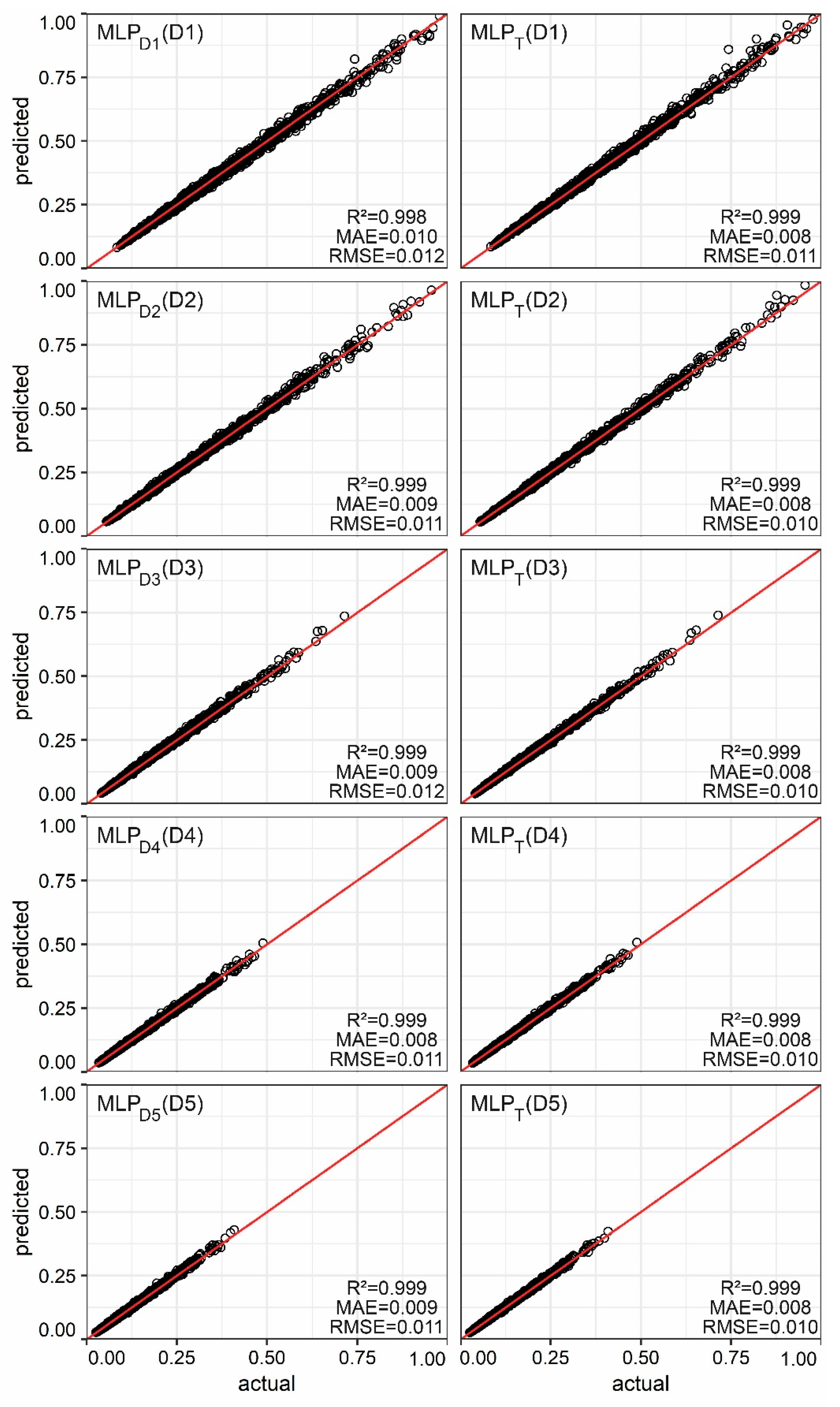
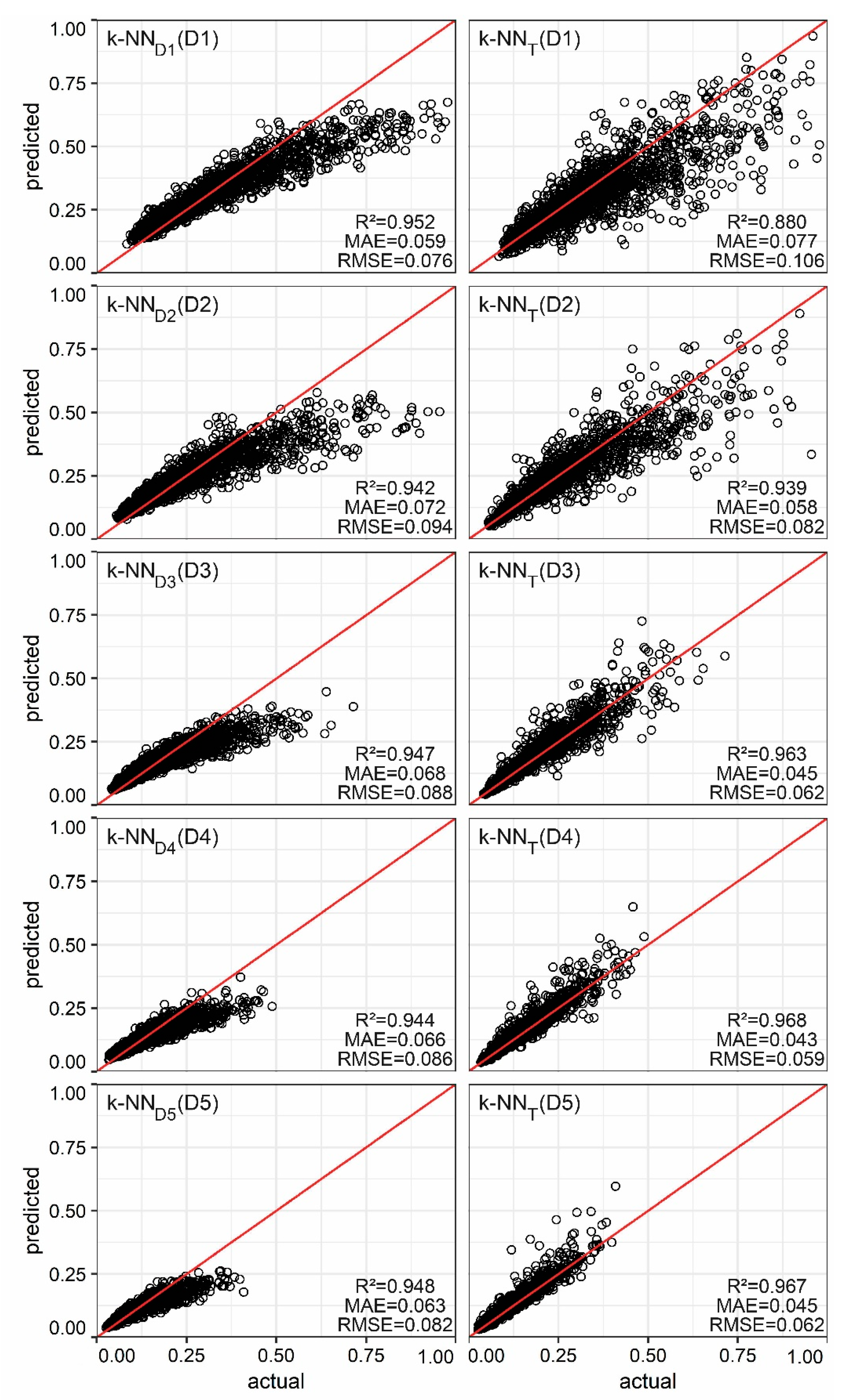

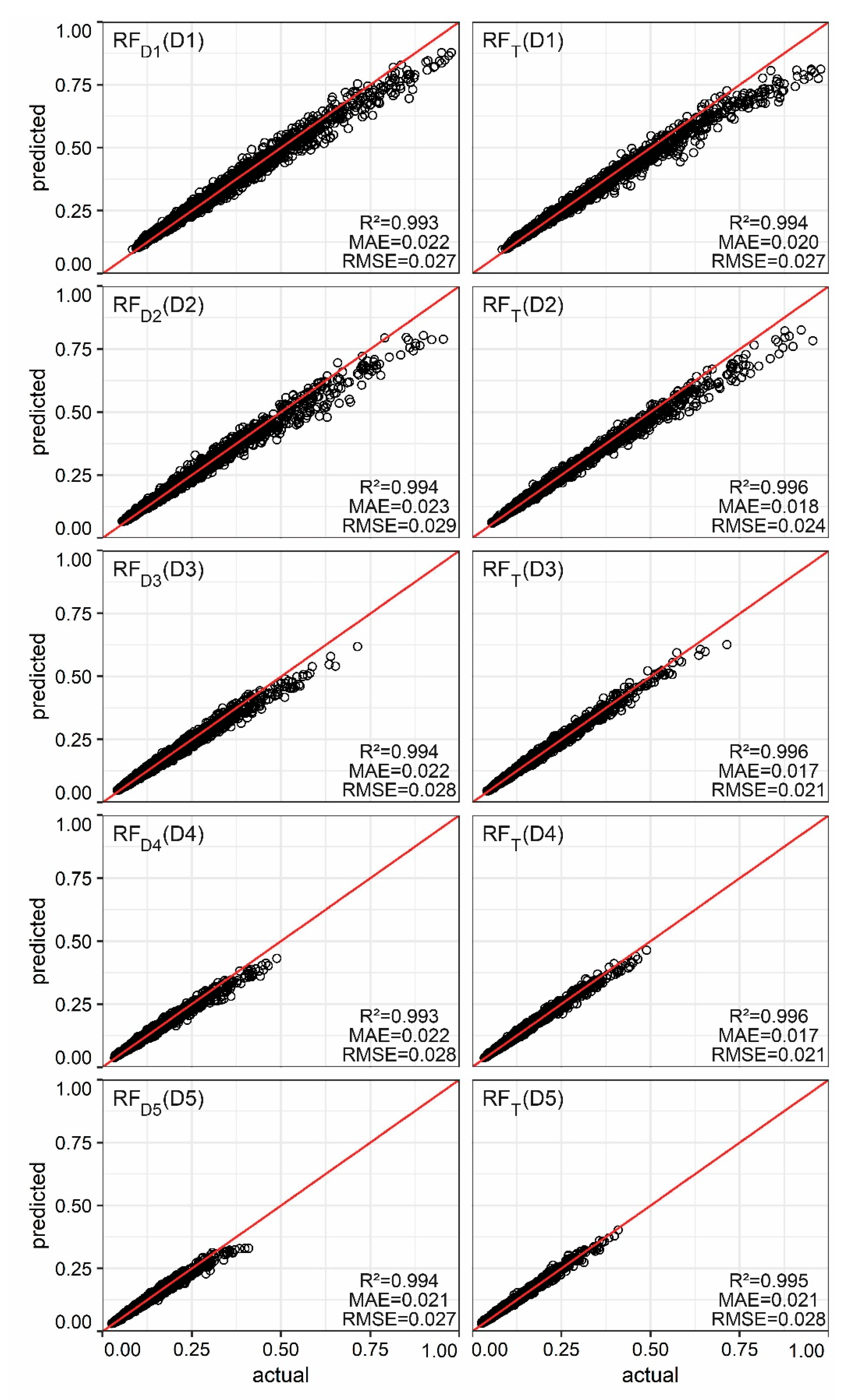
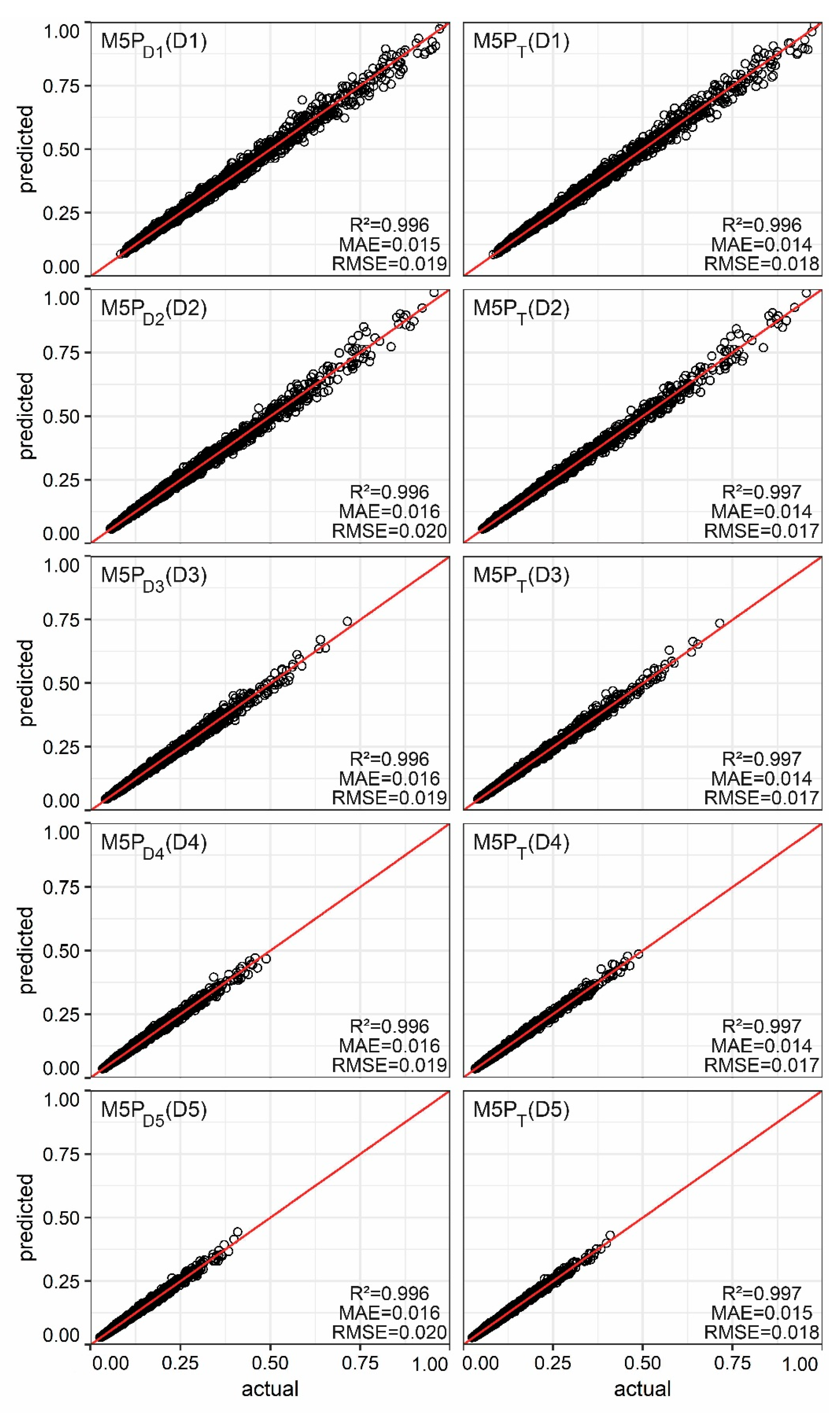

References
- Bouzarovski, S.; Petrova, S. A global perspective on domestic energy deprivation: Overcoming the energy poverty–fuel pov-erty binary. Energy Res. Soc. Sci. 2015, 10, 31–40. [Google Scholar] [CrossRef]
- Thomson, H.; Bouzarovski, S.; Snell, C. Rethinking the measurement of energy poverty in Europe: A critical analysis of indicators and data. Indoor Built Environ. 2017, 26, 879–901. [Google Scholar] [CrossRef] [PubMed]
- Pachauri, D.S. Energy Use and Energy Access in Relation to Poverty. Econ. Polit. Wkly. 2004, 39, 271–278. [Google Scholar]
- González-Eguino, M. Energy poverty: An overview. Renew. Sustain. Energy Rev. 2015, 47, 377–385. [Google Scholar] [CrossRef]
- Thomson, H.; Snell, C. Quantifying the prevalence of fuel poverty across the European Union. Energy Policy 2013, 52, 563–572. [Google Scholar] [CrossRef]
- Middlemiss, L.; Gillard, R. Fuel poverty from the bottom-up: Characterising household energy vulnerability through the lived experience of the fuel poor. Energy Res. Soc. Sci. 2015, 6, 146–154. [Google Scholar] [CrossRef]
- Liddell, C.; Morris, C.; Thomson, H.; Guiney, C. Excess winter deaths in 30 European countries 1980–2013: A critical review of methods. J. Public Health 2015, 38, 806–814. [Google Scholar] [CrossRef] [PubMed]
- Braubach, M.; Ferrand, A. Energy efficiency, housing, equity and health. Int. J. Public Health 2013, 58, 331–332. [Google Scholar] [CrossRef] [PubMed]
- Rosenow, J.; Platt, R.; Flanagan, B. Fuel poverty and energy efficiency obligations—A critical assessment of the supplier obligation in the UK. Energy Policy 2013, 62, 1194–1203. [Google Scholar] [CrossRef]
- Ambrose, A.R. Improving energy efficiency in private rented housing: Why don’t landlords act? Indoor Built. Environ. 2015, 24, 913–924. [Google Scholar] [CrossRef]
- Love, J.; Cooper, A.C. From social and technical to socio-technical: Designing integrated research on domestic energy use. Indoor Built. Environ. 2015, 24, 986–998. [Google Scholar] [CrossRef]
- Snell, C.; Bevan, M.; Thomson, H. Justice, fuel poverty and disabled people in England. Energy Res. Soc. Sci. 2015, 10, 123–132. [Google Scholar] [CrossRef]
- Scarpellini, S.; Rivera-Torres, P.; Suárez-Perales, I.; Aranda-Usón, A. Analysis of energy poverty intensity from the perspective of the regional administration: Empirical evidence from households in southern Europe. Energy Policy 2015, 86, 729–738. [Google Scholar] [CrossRef]
- Programa de las Naciones Unidas para el Desarrollo. Pobreza Energética: Análisis de Experiencias Internacionales y Apren-Dizajes para Chile; Programa de las Naciones Unidas para el Desarrollo: Santiago, Chile, 2018. [Google Scholar]
- Boardman, B. Fuel Poverty: From Cold Homes to Affordable Warmth; John Wiley & Sons Ltd.: London, UK, 1991. [Google Scholar]
- Thomson, H.; Snell, C.; Liddell, C. Fuel poverty in the European Union: A concept in need of definition? People Place Policy Online 2016, 10, 5–24. [Google Scholar] [CrossRef]
- Schuessler, R. Energy Poverty Indicators: Conceptual Issues—Part I: The Ten-Percent-Rule and Double Median/Mean Indicators. SSRN Electron. J. 2014, 14. [Google Scholar] [CrossRef]
- Rademaekers, K.; Yearwood, J.; Ferreira, A.; Pye, S.; Hamilton, I.; Agnolucci, P.; Grover, D.; Karásek, J.; Anisimova, N. Selecting Indicators to Measure Energy Poverty; Trinomics: Rotterdam, The Netherlands, 2014. [Google Scholar]
- Nussbaumer, P.; Bazilian, M.; Modi, V. Measuring energy poverty: Focusing on what matters. Renew. Sustain. Energy Rev. 2012, 16, 231–243. [Google Scholar] [CrossRef]
- Narula, R.; Kodiyat, T.P. The Growth of Outward FDI and the Competitiveness of the Underlying Economy: The Case of India. In UNU-MERIT Working Papers 2013; UNU-MERIT: Maastricht, The Netherlands, 2013; pp. 1–26. [Google Scholar] [CrossRef]
- European Comission. European Union Statistics on Income and Living Conditions (EU-SILC); Eurostat: Luxembourg, 2014. [Google Scholar]
- Miniaci, R.; Scarpa, C.; Valbonesi, P. Fuel Poverty and the Energy Benefits System: The Italian Case. SSRN Electron. J. 2014. [Google Scholar] [CrossRef]
- Legendre, B.; Ricci, O. Measuring fuel poverty in France: Which households are the most fuel vulnerable? Energy Econ. 2015, 49, 620–628. [Google Scholar] [CrossRef]
- Florio, P.; Teissier, O. Estimation of the Energy Performance Certificate of a housing stock characterised via qualitative variables through a typology-based approach model: A fuel poverty evaluation tool. Energy Build. 2015, 89, 39–48. [Google Scholar] [CrossRef]
- Fabbri, K. Building and fuel poverty, an index to measure fuel poverty: An Italian case study. Energy 2015, 89, 244–258. [Google Scholar] [CrossRef]
- Sánchez-Guevara Sánchez, C.; Neila Gonzalez, F.J.; Hernández Aja, A. Towards a fuel poverty definition for Spain. In Proceedings of the World Sustainable Building Conference 2014, Barcelona, Spain, 28–30 October 2014; pp. 11–17. [Google Scholar]
- Okushima, S. Gauging energy poverty: A multidimensional approach. Energy 2017, 137, 1159–1166. [Google Scholar] [CrossRef]
- MINVU. Estadisticas históricas. Minist Vivienda. 2016. Available online: https://www.minvu.cl/elementos-tecnicos/estadisticas/estadisticas-de-edificacion/ (accessed on 20 January 2001).
- Corporación de Desarrollo Tecnológico de la Cámara Chilena de la Construcción. Estudio de Usos Finales y Curva de Oferta de la Conservación de la Energía en el Sector Residencial; Corporación de Desarrollo Tecnológico de la Cámara Chilena de la Construcción: Las Condes, Chile, 2010. [Google Scholar]
- Ministerio de Energía. Desarrollo del un Marco Conceptual y Metodológico para Abordar la Pobreza Energética en Chile; Ministerio de Energía: Santiago, Chile, 2017.
- Pérez-Fargallo, A.; Rubio-Bellido, C.; Pulido-Arcas, J.A.; Trebilcock, M. Development policy in social housing allocation: Fuel poverty potential risk index. Indoor Built Environ. 2017, 26, 980–998. [Google Scholar] [CrossRef]
- Ministerio de Energía. Agenda de Energía. Un Desafío País, Progreso para Todos; Ministerio de Energía: Santiago, Chile, 2014.
- Ministerio de Energía. Energía 2050. Política Energética de Chile; Ministerio de Energía: Santiago, Chile, 2017.
- García-Ochoa, R. Pobreza Energética en América Latina; CEPAL: Santiago, Chile, 2014. [Google Scholar]
- Programa de las Naciones Unidas para el Desarrollo. Documento de Proyecto. Desarrllo de un Marco Concepctual y Metodológico para Abordar la Pobreza Energética en Chile; Programa de las Naciones Unidas para el Desarrollo: Santiago, Chile, 2016. [Google Scholar]
- Pérez-Fargallo, A.; Bienvenido-Huertas, D.; Rubio-Bellido, C.; Trebilcock, M. Energy Poverty Risk Mapping Methodology Considering the User’s Thermal Adaptability: The Case of Chile. Energy Sustain. Dev. 2020, 58, 63–77. [Google Scholar] [CrossRef]
- Pino-Mejías, R.; Pérez-Fargallo, A.; Rubio-Bellido, C.; Pulido-Arcas, J.A. Artificial neural networks and linear regression prediction models for social housing allocation: Fuel Poverty Potential Risk Index. Energy 2018, 164, 627–641. [Google Scholar] [CrossRef]
- Ministerio de Desarrollo Social de Chile. CASEN 2013. Evolución y Distribución del Ingreso de los Hogares (2006–2013); Ministerio de Desarrollo Social de Chile: Santiago, Chile, 2015.
- European Committee for Standardization. EN 15251:2007 Indoor Environmental Input Parameters For design and Assessment of Energy Performance of Buildings Addressing Indoor Quality, Thermal Environment, Lighting and Acoustics; European Committee for Standardization: Brussels, Switzerland, 2007. [Google Scholar]
- Attia, S.; Carlucci, S. Impact of different thermal comfort models on zero energy residential buildings in hot climate. Energy Build. 2015, 102, 117–128. [Google Scholar] [CrossRef]
- Bienvenido-Huertas, D.; Pérez-Fargallo, A.; Alvarado-Amador, R.; Rubio-Bellido, C. Influence of Climate on the Creation of Multilayer Perceptrons to Analyse the Risk of Fuel Poverty. Energy Build. 2019, 198, 38–60. [Google Scholar] [CrossRef]
- Pérez-Fargallo, A.; Rubio-Bellido, C.; Pulido-Arcas, J.A.; Guevara-García, F.J. Fuel Poverty Potential Risk Index in the context of climate change in Chile. Energy Policy 2018, 113, 157–170. [Google Scholar] [CrossRef]
- Bourdeau, M.; Zhai, X.Q.; Nefzaoui, E.; Guo, X.; Chatellier, P. Modeling and forecasting building energy consumption: A review of data-driven techniques. Sustain. Cities Soc. 2019, 48. [Google Scholar] [CrossRef]
- Haykin, S.S. Neural Networks and Learning Machines; Pearson: Upper Saddle River, NJ, USA, 2009; Volume 3. [Google Scholar]
- Raghu, S.; Sriraam, N. Optimal configuration of multilayer perceptron neural network classifier for recognition of intracranial epileptic seizures. Expert Syst. Appl. 2017, 89, 205–221. [Google Scholar] [CrossRef]
- Zhou, W.; Jia, J. A learning framework for shape retrieval based on multilayer perceptrons. Pattern Recognit. Lett. 2019, 117, 119–130. [Google Scholar] [CrossRef]
- Bienvenido-Huertas, D.; Moyano, J.; Rodríguez-Jiménez, C.E.; Marín, D. Applying an artificial neural network to assess thermal transmittance in walls by means of the thermometric method. Appl. Energy 2019, 234, 1–14. [Google Scholar] [CrossRef]
- Pino-Mejías, R.; Pérez-Fargallo, A.; Rubio-Bellido, C.; Pulido-Arcas, J.A. Comparison of linear regression and artificial neural networks models to predict heating and cooling energy demand, energy consumption and CO2 emissions. Energy 2017, 118, 24–36. [Google Scholar] [CrossRef]
- Deb, C.; Lee, S.E.; Santamouris, M. Using artificial neural networks to assess HVAC related energy saving in retrofitted office buildings. Sol. Energy 2018, 163, 32–44. [Google Scholar] [CrossRef]
- Deb, C.; Eang, L.S.; Yang, J.; Santamouris, M. Forecasting diurnal cooling energy load for institutional buildings using Artificial Neural Networks. Energy Build. 2016, 121, 284–297. [Google Scholar] [CrossRef]
- Magalhães, S.M.; Leal, V.M.; Horta, I.M. Modelling the relationship between heating energy use and indoor temperatures in residential buildings through Artificial Neural Networks considering occupant behavior. Energy Build. 2017, 151, 332–343. [Google Scholar] [CrossRef]
- Kljajić, M.; Gvozdenac, D.; Vukmirović, S. Use of Neural Networks for modeling and predicting boiler’s operating performance. Energy 2012, 45, 304–311. [Google Scholar] [CrossRef]
- Kialashaki, A.; Reisel, J.R. Modeling of the energy demand of the residential sector in the United States using regression models and artificial neural networks. Appl. Energy 2013, 108, 271–280. [Google Scholar] [CrossRef]
- Barron, A.R. Universal approximation bounds for superpositions of a sigmoidal function. IEEE Trans. Inf. Theory 1993, 39, 930–945. [Google Scholar] [CrossRef]
- Cybenko, G. Approximation by superpositions of a sigmoidal function. Math. Control. Signals Syst. 1989, 2, 303–314. [Google Scholar] [CrossRef]
- Rumelhart, D.E.; Hinton, G.E.; Williams, R.J. Learning representations by back-propagating errors. Nat. Cell Biol. 1986, 323, 533–536. [Google Scholar] [CrossRef]
- Chambers, L.G.; Fletcher, R. Practical Methods of Optimization; John Wiley & Sons: Hoboken, NJ, USA, 1980. [Google Scholar]
- Kumar, R.; Aggarwal, R.; Sharma, J. Energy analysis of a building using artificial neural network: A review. Energy Build. 2013, 65, 352–358. [Google Scholar] [CrossRef]
- Aha, D.W.; Kibler, D.; Albert, M.K. Instance-based learning algorithms. Mach. Learn. 1991, 6, 37–66. [Google Scholar] [CrossRef]
- Beckel, C.; Sadamori, L.; Staake, T.; Santini, S. Revealing household characteristics from smart meter data. Energy 2014, 78, 397–410. [Google Scholar] [CrossRef]
- Hu, C.; Jain, G.; Zhang, P.; Schmidt, C.; Gomadam, P.; Gorka, T. Data-driven method based on particle swarm optimization and k-nearest neighbor regression for estimating capacity of lithium-ion battery. Appl. Energy 2014, 129, 49–55. [Google Scholar] [CrossRef]
- Madeti, S.R.; Singh, S. Modeling of PV system based on experimental data for fault detection using kNN method. Sol. Energy 2018, 173, 139–151. [Google Scholar] [CrossRef]
- Rodger, J.A. A fuzzy nearest neighbor neural network statistical model for predicting demand for natural gas and energy cost savings in public buildings. Expert Syst. Appl. 2014, 41, 1813–1829. [Google Scholar] [CrossRef]
- Szczurek, A.; Maciejewska, M.; Pietrucha, T. Occupancy determination based on time series of CO2 concentration, temperature and relative humidity. Energy Build. 2017, 147, 142–154. [Google Scholar] [CrossRef]
- Hartigan, J.A.; Wong, M.A. Algorithm AS 136: A K-Means Clustering Algorithm. J. R. Stat. Soc. Ser. C 1979, 28, 100–108. [Google Scholar] [CrossRef]
- Black, P.E. DADS: The On-Line Dictionary of Algorithms and Data Structures; NIST: Gaithersburg, MD, USA, 2020. [Google Scholar]
- Ahmed, N.K.; Atiya, A.F.; El Gayar, N.; El-Shishiny, H. An Empirical Comparison of Machine Learning Models for Time Series Forecasting. Econ. Rev. 2010, 29, 594–621. [Google Scholar] [CrossRef]
- Breiman, L.; Friedman, J.H.; Olshen, R.A.; Stone, C.J. Classification and Regression Trees; CRC Press: Boca Raton, FL, USA, 2017. [Google Scholar]
- Sun, W. River ice breakup timing prediction through stacking multi-type model trees. Sci. Total. Environ. 2018, 644, 1190–1200. [Google Scholar] [CrossRef]
- Xu, M.; Watanachaturaporn, P.; Varshney, P.K.; Arora, M.K. Decision tree regression for soft classification of remote sensing data. Remote. Sens. Environ. 2005, 97, 322–336. [Google Scholar] [CrossRef]
- Tso, G.K.; Yau, K.K. Predicting electricity energy consumption: A comparison of regression analysis, decision tree and neural networks. Energy 2007, 32, 1761–1768. [Google Scholar] [CrossRef]
- Mousa, W.A.; Lang, W.; Auer, T.; Yousef, W.A. A pattern recognition approach for modeling the air change rates in naturally ventilated buildings from limited steady-state CFD simulations. Energy Build. 2017, 155, 54–65. [Google Scholar] [CrossRef]
- Williams, K.T.; Gomez, J.D. Predicting future monthly residential energy consumption using building characteristics and climate data: A statistical learning approach. Energy Build. 2016, 128, 1–11. [Google Scholar] [CrossRef]
- Rodriguez-Galiano, V.; Sanchez-Castillo, M.; Chica-Olmo, M.; Chica-Rivas, M. Machine learning predictive models for mineral prospectivity: An evaluation of neural networks, random forest, regression trees and support vector machines. Ore Geol. Rev. 2015, 71, 804–818. [Google Scholar] [CrossRef]
- Dudoit, S.; Fridlyand, J.; Speed, T.P. Comparison of discrimination methods for the classification of tumors using gene expres-sion data. J. Am. Stat. Assoc. 2002, 97, 77–87. [Google Scholar] [CrossRef]
- Lariviere, B.; Vandenpoel, D. Predicting customer retention and profitability by using random forests and regression forests techniques. Expert Syst. Appl. 2005, 29, 472–484. [Google Scholar] [CrossRef]
- Breiman, L. Bagging predictors. Mach. Learn. 1996, 24, 123–140. [Google Scholar] [CrossRef]
- Breiman, L. Random Forests. Mach. Learn. 2001, 45, 5–32. [Google Scholar] [CrossRef]
- Dietterich, T.G. An Experimental Comparison of Three Methods for Constructing Ensembles of Decision Trees: Bagging, Boosting, and Randomization. Mach. Learn. 2000, 40, 139–157. [Google Scholar] [CrossRef]
- Assouline, D.; Mohajeri, N.; Scartezzini, J.-L. Large-scale rooftop solar photovoltaic technical potential estimation using Random Forests. Appl. Energy 2018, 217, 189–211. [Google Scholar] [CrossRef]
- Li, C.; Tao, Y.; Ao, W.; Yang, S.; Bai, Y. Improving forecasting accuracy of daily enterprise electricity consumption using a random forest based on ensemble empirical mode decomposition. Energy 2018, 165, 1220–1227. [Google Scholar] [CrossRef]
- Manjarres, D.; Mera, A.; Perea, E.; Lejarazu, A.; Gil-Lopez, S. An energy-efficient predictive control for HVAC systems applied to tertiary buildings based on regression techniques. Energy Build. 2017, 152, 409–417. [Google Scholar] [CrossRef]
- Wang, Z.; Wang, Y.; Zeng, R.; Srinivasan, R.S.; Ahrentzen, S. Random Forest based hourly building energy prediction. Energy Build. 2018, 171, 11–25. [Google Scholar] [CrossRef]
- Zhou, Y.; Qiu, G. Random forest for label ranking. Expert Syst. Appl. 2018, 112, 99–109. [Google Scholar] [CrossRef]
- Quinlan, J.R. Learning with Continuous Classes. In Proceedings of the Australian Joint Conference on Artificial Intelligence, Hobart, Australia, 16–18 November 1992; Volume 92, pp. 343–348. [Google Scholar]
- Wang, Y.; Witten, I.H. Induction of Model Trees for Predicting Continuous Classes; University of Waikato: Hamilton, New Zealand, 1996. [Google Scholar]
- Behnood, A.; Behnood, V.; Gharehveran, M.M.; Alyamac, K.E. Prediction of the compressive strength of normal and high-performance concretes using M5P model tree algorithm. Constr. Build. Mater. 2017, 142, 199–207. [Google Scholar] [CrossRef]
- Lin, L.; Wang, Q.; Sadek, A.W. A combined M5P tree and hazard-based duration model for predicting urban freeway traffic accident durations. Accid. Anal. Prev. 2016, 91, 114–126. [Google Scholar] [CrossRef]
- Afsarian, F.; Saber, A.; Pourzangbar, A.; Olabi, A.G.; Khanmohammadi, M.A. Analysis of recycled aggregates effect on energy conservation using M5′ model tree algorithm. Energy 2018, 156, 264–277. [Google Scholar] [CrossRef]
- Kuo, C.-F.J.; Lin, C.-H.; Lee, M.-H. Analyze the energy consumption characteristics and affecting factors of Taiwan’s convenience stores-using the big data mining approach. Energy Build. 2018, 168, 120–136. [Google Scholar] [CrossRef]
- Azofra, D.; Martínez, E.; Jiménez, E.; Blanco, J.; Azofra, F.; Saenz-Díez, J. Comparison of the influence of photovoltaic and wind power on the Spanish electricity prices by means of artificial intelligence techinques. Renew. Sustain. Energy Rev. 2015, 42, 532–542. [Google Scholar] [CrossRef]
- Cortes, C.; Vapnik, V. Support-vector networks. Mach. Learn. 1995, 20, 273–297. [Google Scholar] [CrossRef]
- Scholkopf, B.; Smola, A.J. Learning with Kernels: Support Vector Machines, Regularization, Optimization, and Beyond; MIT Press: Cambridge, MA, USA, 2001. [Google Scholar]
- Smola, A.J.; Schölkopf, B. A tutorial on support vector regression. Stat. Comput. 2004, 14, 199–222. [Google Scholar] [CrossRef]
- Crawford, E.B.; Carruthers, J.M. Connection and Coherence between and among European Instruments in the Private International Law of Obligations. Int. Comp. Law Q. 2014, 63, 1–29. [Google Scholar] [CrossRef]
- Zendehboudi, A.; Baseer, M.; Saidur, R. Application of support vector machine models for forecasting solar and wind energy resources: A review. J. Clean. Prod. 2018, 199, 272–285. [Google Scholar] [CrossRef]
- Caicedo, D.; Pandharipande, A. Sensor Data-Driven Lighting Energy Performance Prediction. IEEE Sens. J. 2016, 16, 6397–6405. [Google Scholar] [CrossRef]
- Liu, J.; Liu, J.; Chen, H.; Yuan, Y.; Li, Z.; Huang, R. Energy diagnosis of variable refrigerant flow (VRF) systems: Data mining technique and statistical quality control approach. Energy Build. 2018, 175, 148–162. [Google Scholar] [CrossRef]
- Jain, R.K.; Smith, K.M.; Culligan, P.J.; Taylor, J.E. Forecasting energy consumption of multi-family residential buildings using support vector regression: Investigating the impact of temporal and spatial monitoring granularity on performance accuracy. Appl. Energy 2014, 123, 168–178. [Google Scholar] [CrossRef]
- Niu, D.; Wang, Y.; Wu, D.D. Power load forecasting using support vector machine and ant colony optimization. Expert Syst. Appl. 2010, 37, 2531–2539. [Google Scholar] [CrossRef]
- Ding, Y.; Zhang, Q.; Yuan, T.; Yang, K. Model input selection for building heating load prediction: A case study for an office building in Tianjin. Energy Build. 2018, 159, 254–270. [Google Scholar] [CrossRef]
- Zhao, J.; Liu, X. A hybrid method of dynamic cooling and heating load forecasting for office buildings based on artificial intelligence and regression analysis. Energy Build. 2018, 174, 293–308. [Google Scholar] [CrossRef]
- Zuo, R.; Carranza, E.J.M. Support vector machine: A tool for mapping mineral prospectivity. Comput. Geosci. 2011, 37, 1967–1975. [Google Scholar] [CrossRef]
- Ministerio de Vivienda y Urbanismo. DS 47—Ordenanza General de la Ley General de Urbanismo y Construcciones; Ministerio de Vivienda y Urbanismo: Santiago, Chile, 1992.
- Ministerio de Desarrollo Social. Resultados Encuesta Casen 2013; Ministerio de Desarrollo Social: Santiago, Chile, 2013.
- Kirschen, R.H.; O’Higgins, E.A.; Lee, R.T. The Royal London Space Planning: An integration of space analysis and treatment planning. Am. J. Orthod. Dentofac. Orthop. 2000, 118, 448–455. [Google Scholar] [CrossRef] [PubMed]
- Alimissis, A.; Philippopoulos, K.; Tzanis, C.; Deligiorgi, D. Spatial estimation of urban air pollution with the use of artificial neural network models. Atmospheric Environ. 2018, 191, 205–213. [Google Scholar] [CrossRef]
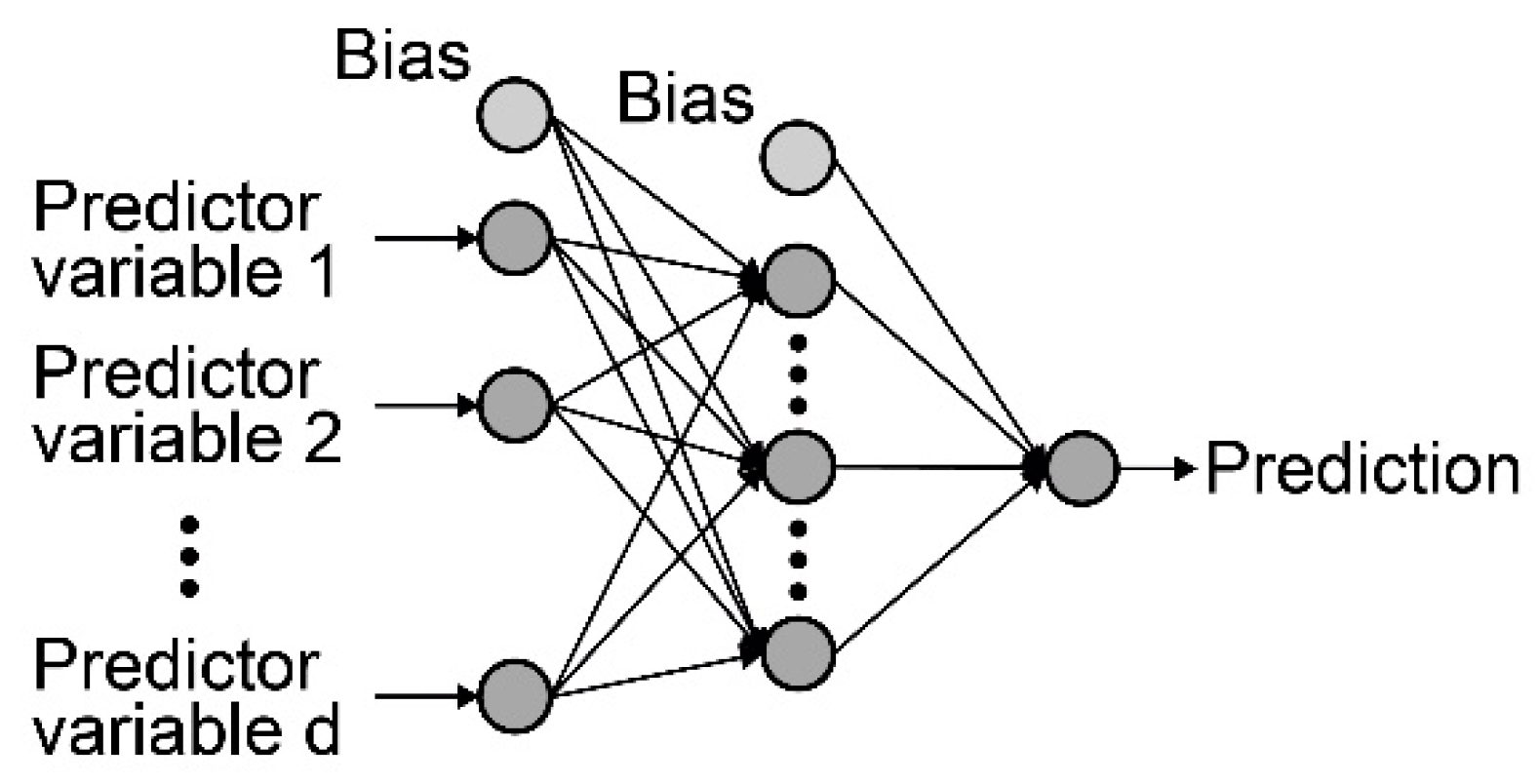
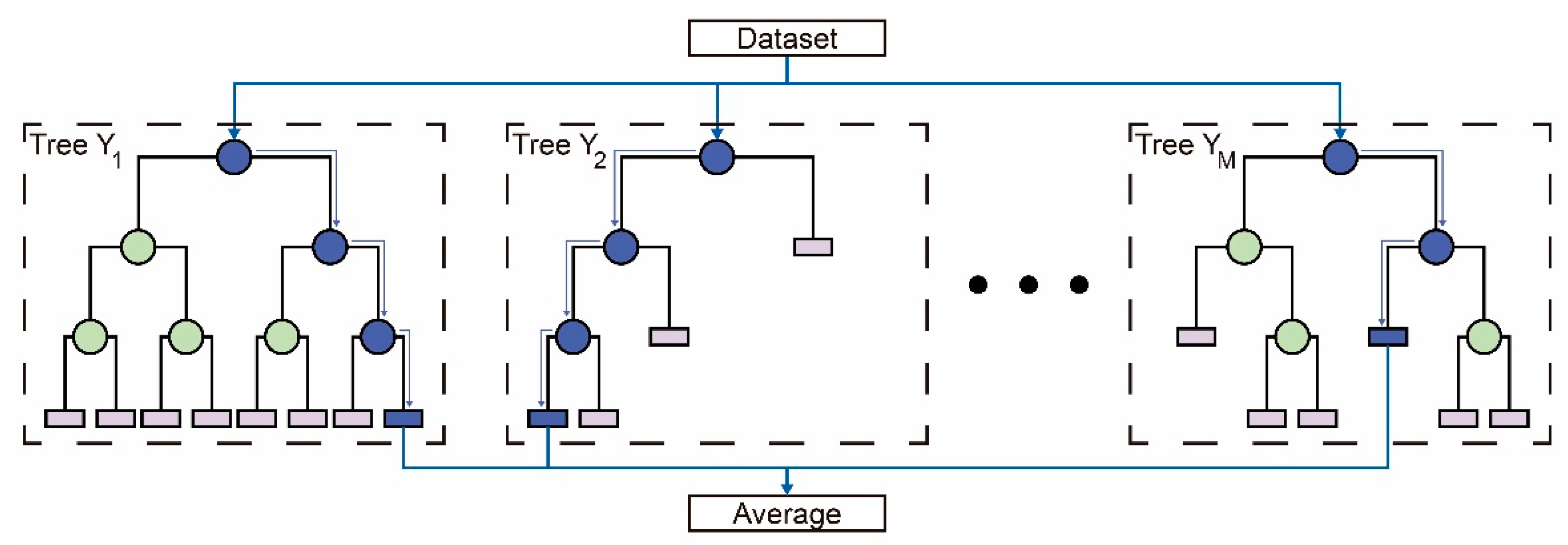
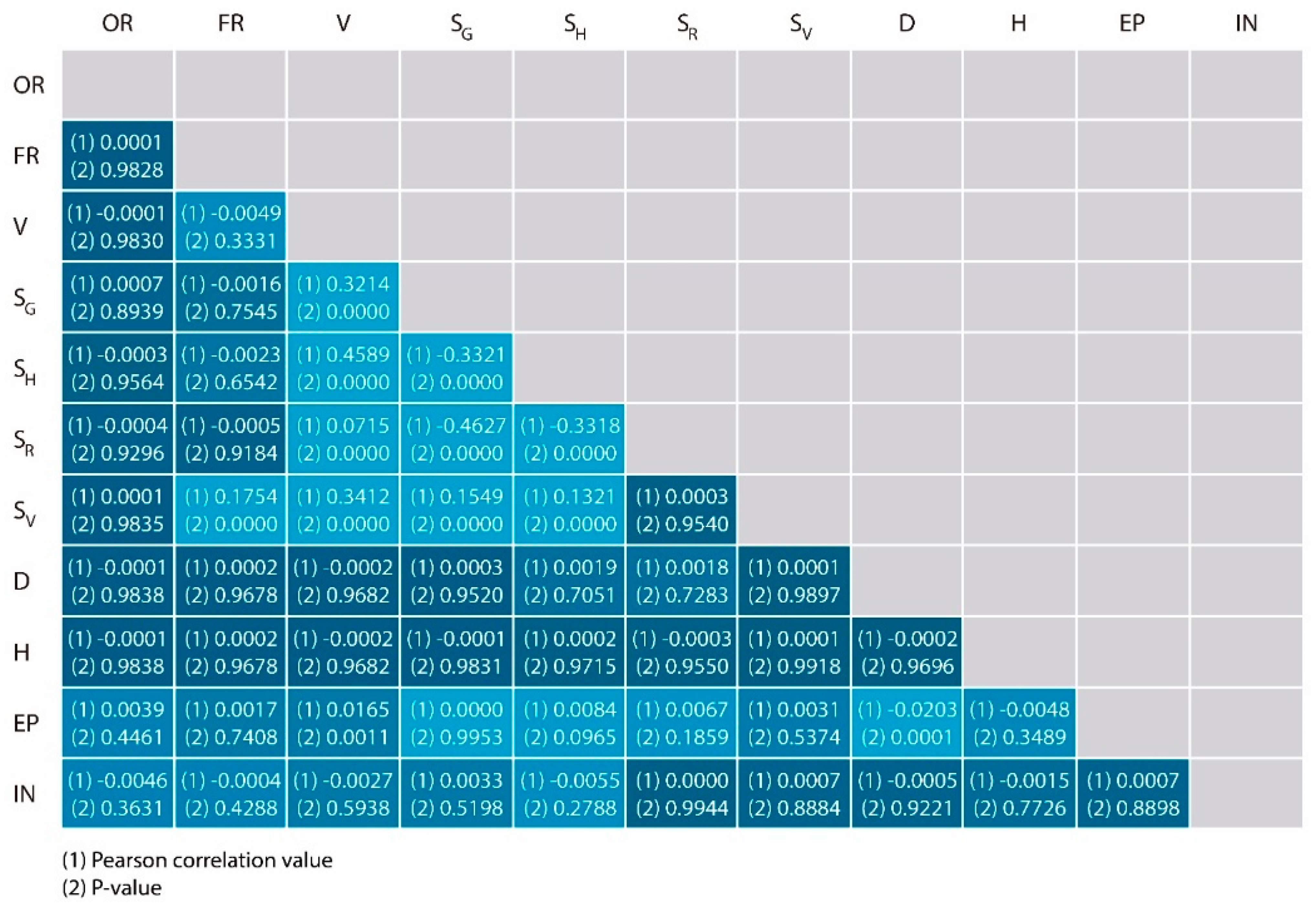

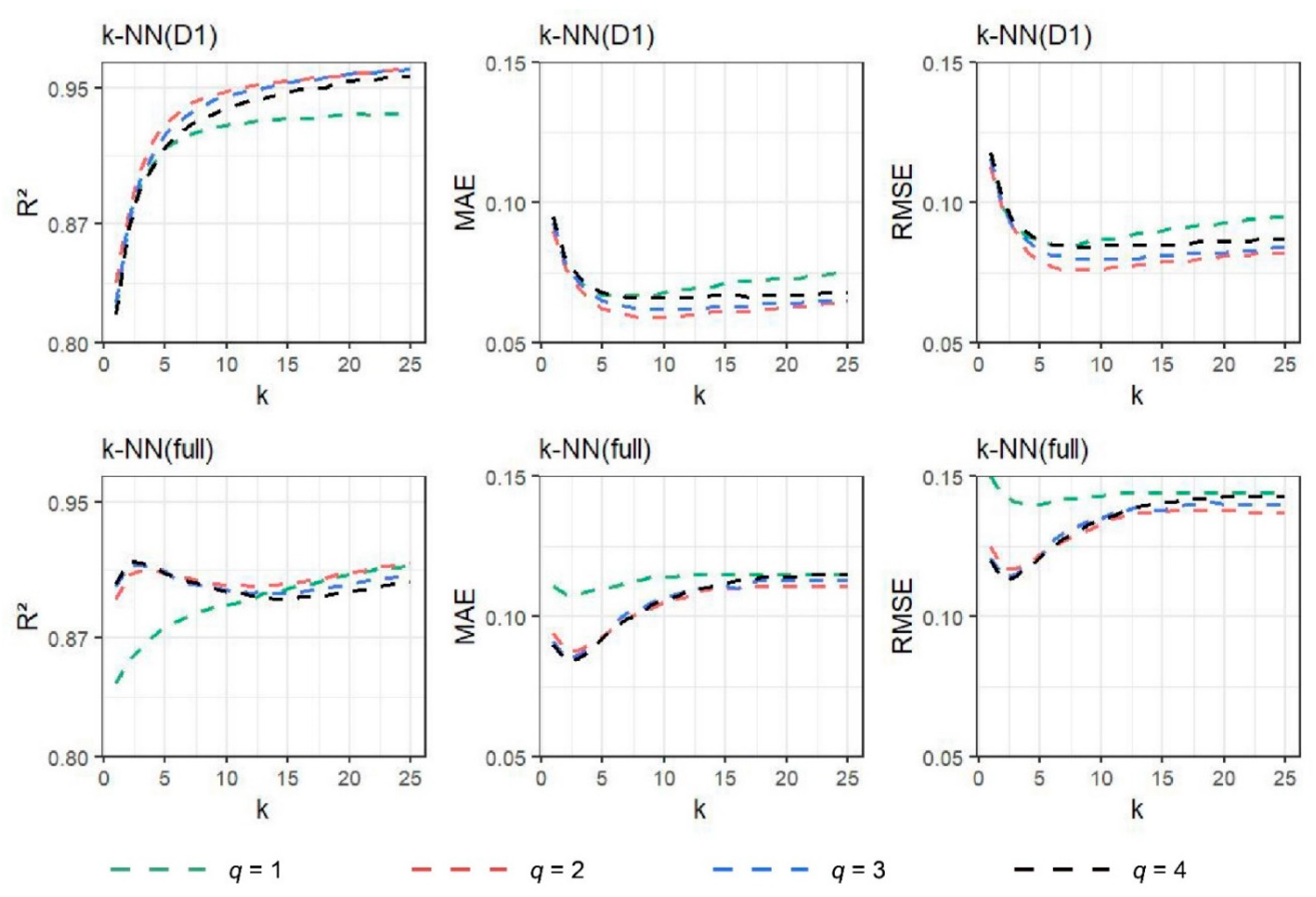
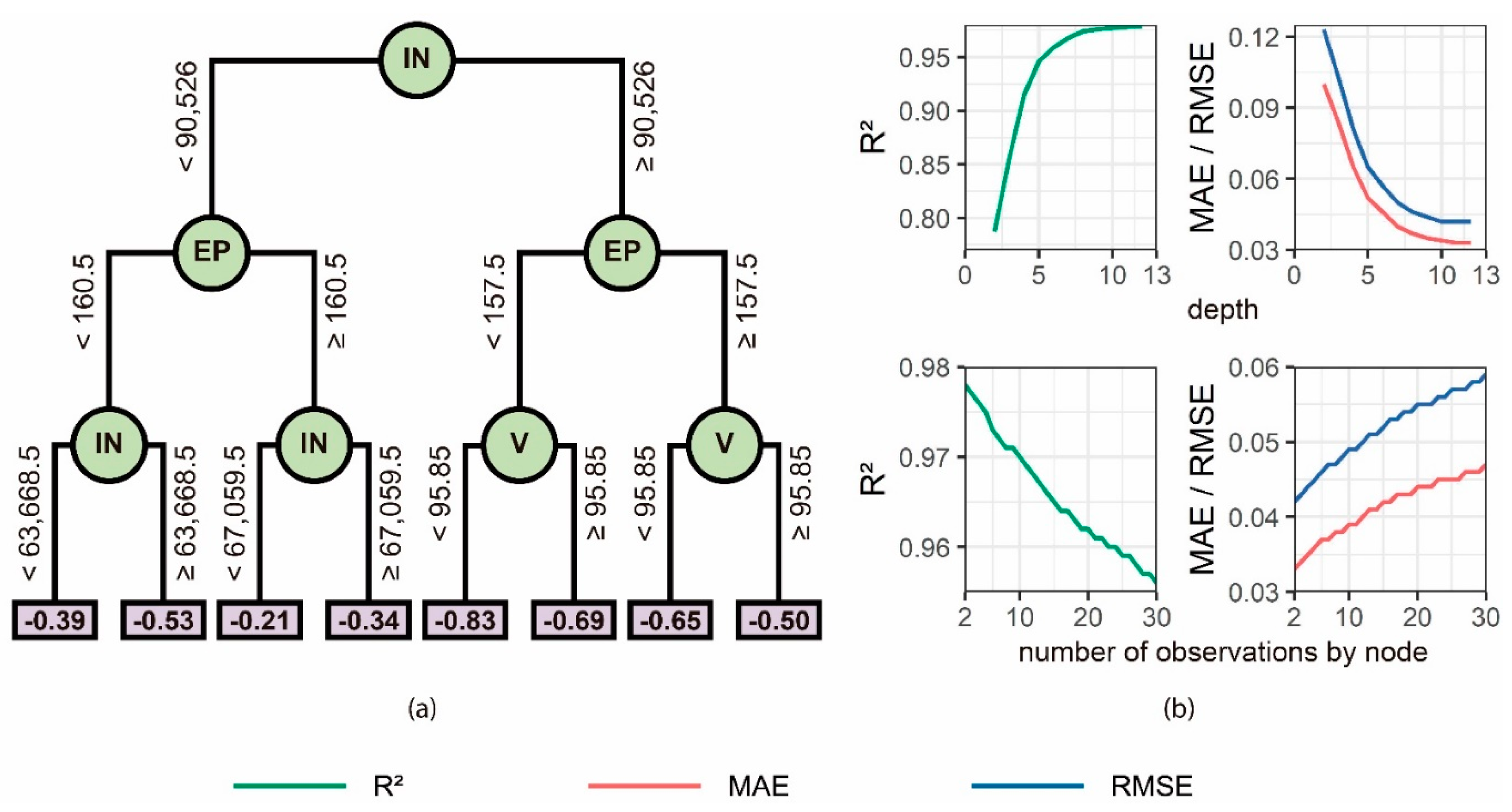

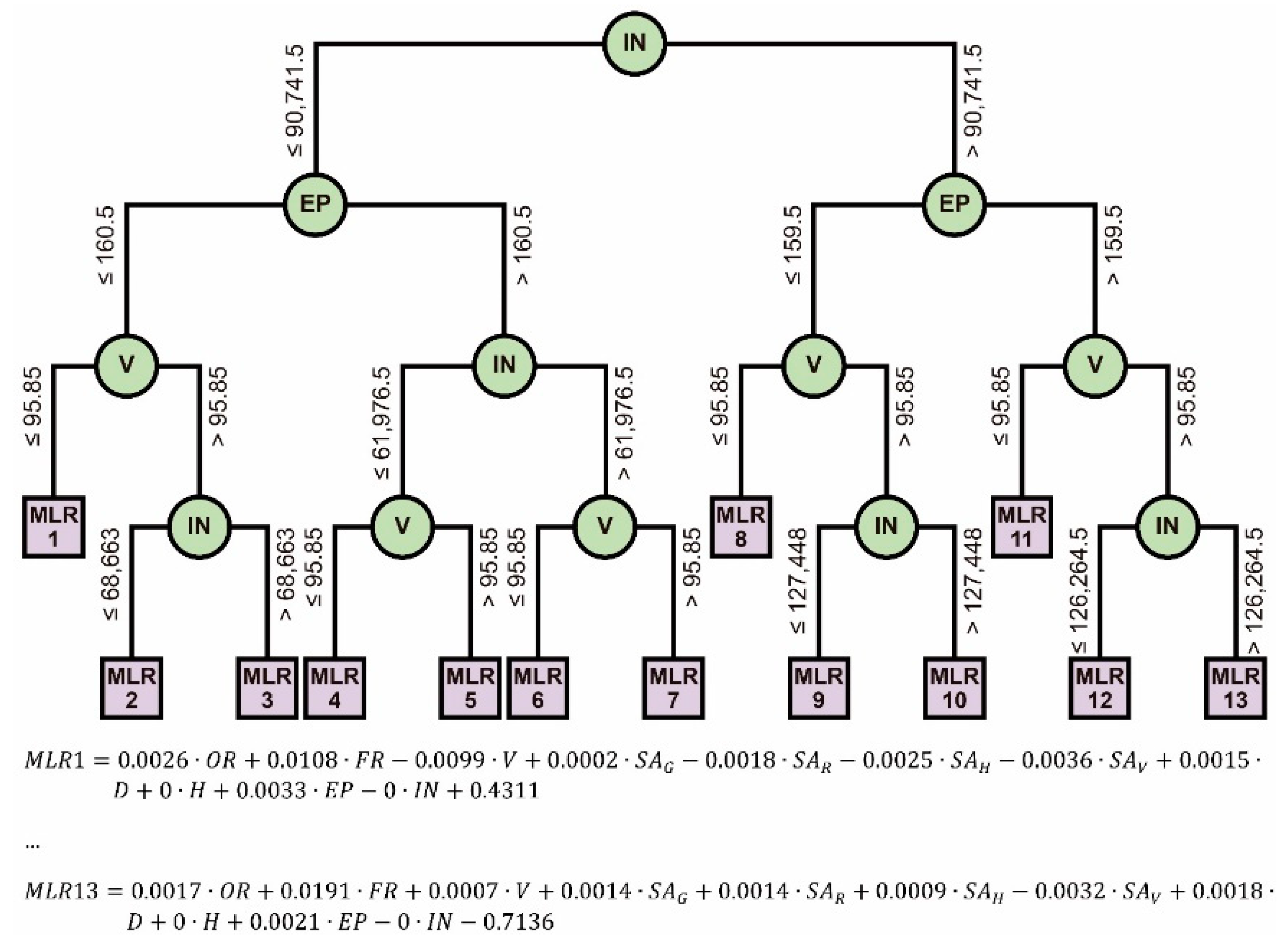

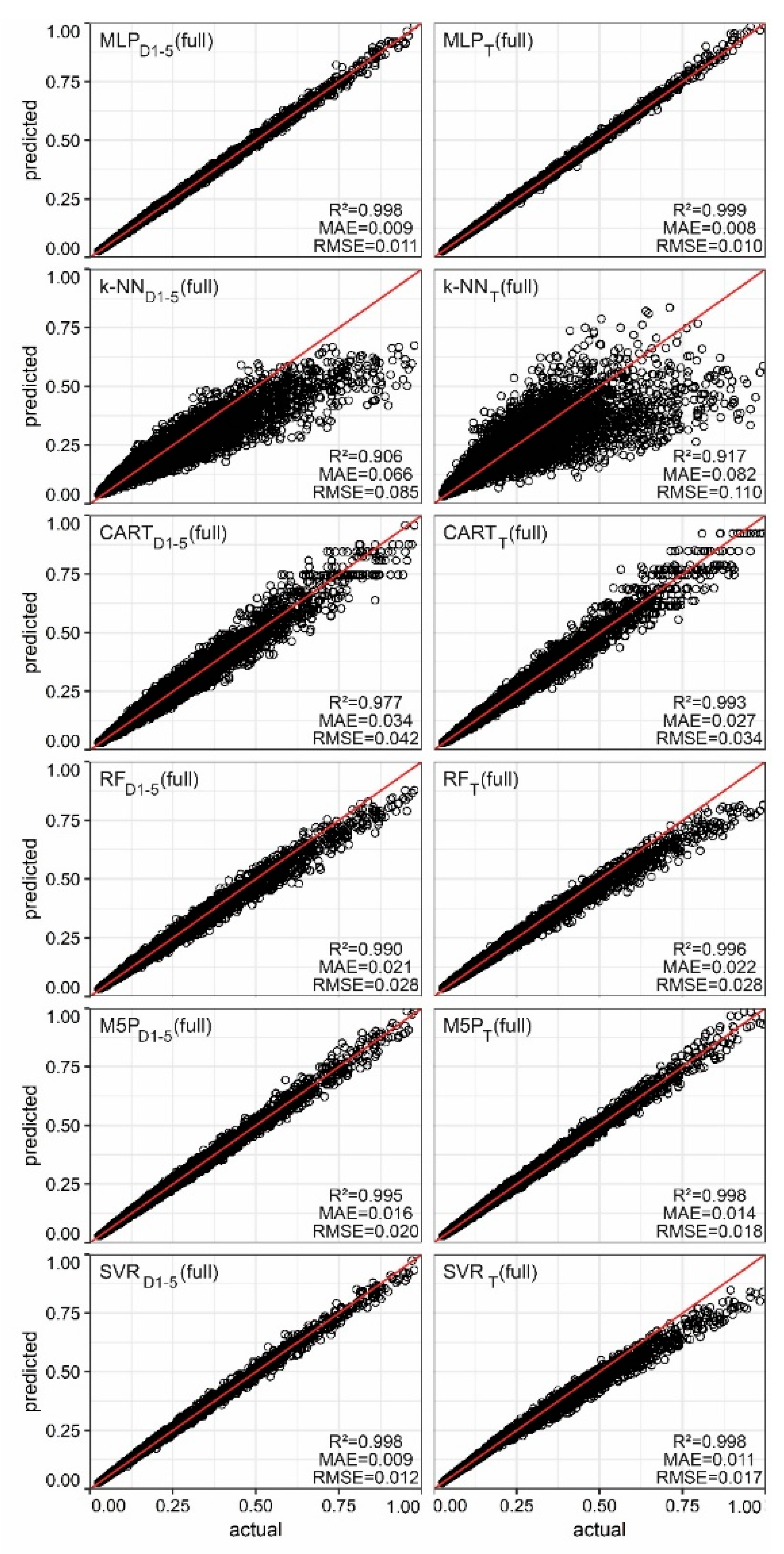
| Year | Mean Monthly Household Income [$] | |||||||||
|---|---|---|---|---|---|---|---|---|---|---|
| Decile | ||||||||||
| I | II | III | IV | V | VI | VII | VIII | IX | X | |
| 2006 | 88,955 | 216,673 | 293,257 | 364,414 | 428,116 | 513,218 | 642,546 | 790,981 | 1,097,094 | 2,464,055 |
| 2009 | 65,151 | 211,744 | 283,602 | 370,674 | 417,867 | 510,817 | 632,655 | 776,025 | 1,093,990 | 2,543,369 |
| 2011 | 84,243 | 229,739 | 304,091 | 385,760 | 448,741 | 520,257 | 636,893 | 793,491 | 1,099,645 | 2,505,654 |
| 2013 | 100,707 | 261,125 | 353,135 | 428,817 | 510,310 | 630,642 | 730,877 | 901,626 | 1,291,669 | 2,857,726 |
| Comfort Limits (°C) | |||
|---|---|---|---|
| Day | Night | ||
| Lower | Upper | Lower | Upper |
| 20 | 27 | 17 | 27 |
| Model and Dataset | Number of Nodes | Training | Testing | ||||
|---|---|---|---|---|---|---|---|
| MLPD1 (D1) | 13 | 0.998 | 0.009 | 0.012 | 0.998 | 0.010 | 0.012 |
| MLPD2 (D2) | 13 | 0.999 | 0.009 | 0.012 | 0.999 | 0.009 | 0.011 |
| MLPD3 (D3) | 12 | 0.998 | 0.010 | 0.013 | 0.999 | 0.009 | 0.012 |
| MLPD4 (D4) | 12 | 0.998 | 0.011 | 0.014 | 0.999 | 0.008 | 0.011 |
| MLPD5 (D5) | 13 | 0.998 | 0.009 | 0.012 | 0.999 | 0.009 | 0.011 |
| MLPT (Fulldataset) | 14 | 0.999 | 0.009 | 0.011 | 0.999 | 0.008 | 0.010 |
| Model and Dataset | Training | Testing | ||||||
|---|---|---|---|---|---|---|---|---|
| -NND1 (D1) | 2 | 10 | 0.948 | 0.059 | 0.076 | 0.952 | 0.059 | 0.076 |
| -NND2 (D2) | 2 | 9 | 0.943 | 0.071 | 0.092 | 0.942 | 0.072 | 0.094 |
| -NND3 (D3) | 2 | 11 | 0.946 | 0.069 | 0.089 | 0.947 | 0.068 | 0.088 |
| -NND4 (D4) | 2 | 10 | 0.946 | 0.066 | 0.085 | 0.944 | 0.066 | 0.086 |
| -NND5 (D5) | 2 | 10 | 0.945 | 0.065 | 0.085 | 0.948 | 0.063 | 0.082 |
| -NNT (Fulldataset) | 4 | 2 | 0.915 | 0.084 | 0.113 | 0.917 | 0.082 | 0.110 |
| Model and Dataset | Training | Testing | ||||
|---|---|---|---|---|---|---|
| CARTD1 (D1) | 0.978 | 0.033 | 0.042 | 0.980 | 0.033 | 0.041 |
| CARTD2 (D2) | 0.982 | 0.035 | 0.045 | 0.983 | 0.035 | 0.044 |
| CARTD3 (D3) | 0.981 | 0.035 | 0.044 | 0.981 | 0.034 | 0.043 |
| CARTD4 (D4) | 0.980 | 0.034 | 0.043 | 0.981 | 0.034 | 0.042 |
| CARTD5 (D5) | 0.980 | 0.035 | 0.043 | 0.981 | 0.034 | 0.042 |
| CARTT (Fulldataset) | 0.992 | 0.027 | 0.034 | 0.993 | 0.027 | 0.034 |
| Model and Dataset | Number of Trees | Training | Testing | ||||
|---|---|---|---|---|---|---|---|
| RFD1 (D1) | 149 | 0.993 | 0.021 | 0.027 | 0.993 | 0.022 | 0.027 |
| RFD2 (D2) | 148 | 0.994 | 0.023 | 0.030 | 0.994 | 0.023 | 0.029 |
| RFD3 (D3) | 148 | 0.993 | 0.023 | 0.029 | 0.994 | 0.022 | 0.028 |
| RFD4 (D4) | 143 | 0.993 | 0.022 | 0.028 | 0.993 | 0.022 | 0.028 |
| RFD5 (D5) | 144 | 0.993 | 0.022 | 0.028 | 0.994 | 0.021 | 0.027 |
| RFT (Fulldataset) | 153 | 0.996 | 0.022 | 0.028 | 0.996 | 0.022 | 0.028 |
| Model and Dataset | Training | Testing | ||||
|---|---|---|---|---|---|---|
| M5PD1 (D1) | 0.995 | 0.016 | 0.020 | 0.996 | 0.015 | 0.019 |
| M5PD2 (D2) | 0.997 | 0.016 | 0.020 | 0.996 | 0.016 | 0.020 |
| M5PD3 (D3) | 0.996 | 0.016 | 0.020 | 0.996 | 0.016 | 0.019 |
| M5PD4 (D4) | 0.996 | 0.015 | 0.019 | 0.996 | 0.016 | 0.019 |
| M5PD5 (D5) | 0.996 | 0.016 | 0.019 | 0.996 | 0.016 | 0.020 |
| M5PT (Fulldataset) | 0.998 | 0.014 | 0.018 | 0.998 | 0.014 | 0.018 |
| Model and Dataset | Training | Testing | ||||||
|---|---|---|---|---|---|---|---|---|
| SVRD1 (D1) | 2.0 | 0.15 | 0.999 | 0.008 | 0.011 | 0.998 | 0.009 | 0.012 |
| SVRD2 (D2) | 1.6 | 0.15 | 0.999 | 0.010 | 0.013 | 0.999 | 0.009 | 0.013 |
| SVRD3 (D3) | 1.9 | 0.15 | 0.999 | 0.009 | 0.012 | 0.999 | 0.009 | 0.011 |
| SVRD4 (D4) | 2.0 | 0.15 | 0.999 | 0.009 | 0.012 | 0.999 | 0.009 | 0.012 |
| SVRD5 (D5) | 2.0 | 0.15 | 0.999 | 0.009 | 0.012 | 0.999 | 0.009 | 0.012 |
| SVRT (Fulldataset) | 2.1 | 0.15 | 0.999 | 0.012 | 0.018 | 0.998 | 0.011 | 0.017 |
| Test Per Each Decile Model | Test Per Total Model | ||||||
|---|---|---|---|---|---|---|---|
| Model | Model | ||||||
| MLP | MLP | ||||||
| MLPD1 (D1) | 0.998 | 0.010 | 0.012 | MLPT (D1) | 0.999 | 0.008 | 0.011 |
| MLPD2 (D2) | 0.999 | 0.009 | 0.011 | MLPT (D2) | 0.999 | 0.008 | 0.010 |
| MLPD3 (D3) | 0.999 | 0.009 | 0.012 | MLPT (D3) | 0.999 | 0.008 | 0.010 |
| MLPD4 (D4) | 0.999 | 0.008 | 0.011 | MLPT (D4) | 0.999 | 0.008 | 0.010 |
| MLPD5 (D5) | 0.999 | 0.009 | 0.011 | MLPT (D5) | 0.999 | 0.008 | 0.010 |
| -NN | -NN | ||||||
| -NND1 (D1) | 0.952 | 0.059 | 0.076 | -NNT (D1) | 0.880 | 0.077 | 0.106 |
| -NND2 (D2) | 0.942 | 0.072 | 0.094 | -NNT (D2) | 0.939 | 0.058 | 0.082 |
| -NND3 (D3) | 0.947 | 0.068 | 0.088 | -NNT (D3) | 0.963 | 0.045 | 0.062 |
| -NND4 (D4) | 0.944 | 0.066 | 0.086 | -NNT (D4) | 0.968 | 0.043 | 0.059 |
| -NND5 (D5) | 0.948 | 0.063 | 0.082 | -NNT (D5) | 0.967 | 0.045 | 0.062 |
| CART | CART | ||||||
| CARTD1 (D1) | 0.980 | 0.033 | 0.041 | CARTT (D1) | 0.988 | 0.023 | 0.031 |
| CARTD2 (D2) | 0.983 | 0.035 | 0.044 | CARTT (D2) | 0.992 | 0.023 | 0.030 |
| CARTD3 (D3) | 0.981 | 0.034 | 0.043 | CARTT (D3) | 0.992 | 0.023 | 0.029 |
| CARTD4 (D4) | 0.981 | 0.034 | 0.042 | CARTT (D4) | 0.992 | 0.022 | 0.028 |
| CARTD5 (D5) | 0.981 | 0.034 | 0.042 | CARTT (D5) | 0.991 | 0.023 | 0.029 |
| RF | RF | ||||||
| RFD1 (D1) | 0.993 | 0.022 | 0.027 | CARTT (D1) | 0.994 | 0.020 | 0.027 |
| RFD2 (D2) | 0.994 | 0.023 | 0.029 | CARTT (D2) | 0.996 | 0.018 | 0.024 |
| RFD3 (D3) | 0.994 | 0.022 | 0.028 | CARTT (D3) | 0.996 | 0.017 | 0.021 |
| RFD4 (D4) | 0.993 | 0.022 | 0.028 | CARTT (D4) | 0.996 | 0.017 | 0.021 |
| RFD5 (D5) | 0.994 | 0.021 | 0.027 | CARTT (D5) | 0.995 | 0.021 | 0.028 |
| M5P | M5P | ||||||
| M5PD1 (D1) | 0.996 | 0.015 | 0.019 | M5P T (D1) | 0.996 | 0.014 | 0.018 |
| M5PD2 (D2) | 0.996 | 0.016 | 0.020 | M5P T (D2) | 0.997 | 0.014 | 0.017 |
| M5PD3 (D3) | 0.996 | 0.016 | 0.019 | M5P T (D3) | 0.997 | 0.014 | 0.017 |
| M5PD4 (D4) | 0.996 | 0.016 | 0.019 | M5P T (D4) | 0.997 | 0.014 | 0.017 |
| M5PD5 (D5) | 0.996 | 0.016 | 0.020 | M5P T (D5) | 0.997 | 0.015 | 0.018 |
| SVR | SVR | ||||||
| SVRD1 (D1) | 0.998 | 0.009 | 0.012 | SVRT (D1) | 0.995 | 0.018 | 0.026 |
| SVRD2 (D2) | 0.999 | 0.009 | 0.013 | SVRT (D2) | 0.997 | 0.013 | 0.021 |
| SVRD3 (D3) | 0.999 | 0.009 | 0.011 | SVRT (D3) | 0.999 | 0.009 | 0.011 |
| SVRD4 (D4) | 0.999 | 0.009 | 0.012 | SVRT (D4) | 0.999 | 0.008 | 0.011 |
| SVRD5 (D5) | 0.999 | 0.009 | 0.012 | SVRT (D5) | 0.999 | 0.008 | 0.011 |
| Algorithm | Time (s) | |||||
|---|---|---|---|---|---|---|
| Model | ||||||
| D1 | D2 | D3 | D4 | D5 | T | |
| MLP | 77.3 | 71.6 | 66.0 | 66.1 | 71.2 | 391.2 |
| -NN | 5.3 | 5.6 | 5.7 | 5.8 | 5.6 | 653.2 |
| CART | 2.4 | 2.3 | 2.1 | 2.0 | 2.1 | 11.3 |
| RF | 20.3 | 20.6 | 21.3 | 20.2 | 21.1 | 95.1 |
| M5P | 5.1 | 4.9 | 5.1 | 5.4 | 5.2 | 26.2 |
| SVR | 2188.2 | 1991.3 | 2195.3 | 2130.3 | 2142.0 | 67,771.3 |
Publisher’s Note: MDPI stays neutral with regard to jurisdictional claims in published maps and institutional affiliations. |
© 2021 by the authors. Licensee MDPI, Basel, Switzerland. This article is an open access article distributed under the terms and conditions of the Creative Commons Attribution (CC BY) license (http://creativecommons.org/licenses/by/4.0/).
Share and Cite
Bienvenido-Huertas, D.; Pulido-Arcas, J.A.; Rubio-Bellido, C.; Pérez-Fargallo, A. Prediction of Fuel Poverty Potential Risk Index Using Six Regression Algorithms: A Case-Study of Chilean Social Dwellings. Sustainability 2021, 13, 2426. https://doi.org/10.3390/su13052426
Bienvenido-Huertas D, Pulido-Arcas JA, Rubio-Bellido C, Pérez-Fargallo A. Prediction of Fuel Poverty Potential Risk Index Using Six Regression Algorithms: A Case-Study of Chilean Social Dwellings. Sustainability. 2021; 13(5):2426. https://doi.org/10.3390/su13052426
Chicago/Turabian StyleBienvenido-Huertas, David, Jesús A. Pulido-Arcas, Carlos Rubio-Bellido, and Alexis Pérez-Fargallo. 2021. "Prediction of Fuel Poverty Potential Risk Index Using Six Regression Algorithms: A Case-Study of Chilean Social Dwellings" Sustainability 13, no. 5: 2426. https://doi.org/10.3390/su13052426
APA StyleBienvenido-Huertas, D., Pulido-Arcas, J. A., Rubio-Bellido, C., & Pérez-Fargallo, A. (2021). Prediction of Fuel Poverty Potential Risk Index Using Six Regression Algorithms: A Case-Study of Chilean Social Dwellings. Sustainability, 13(5), 2426. https://doi.org/10.3390/su13052426








